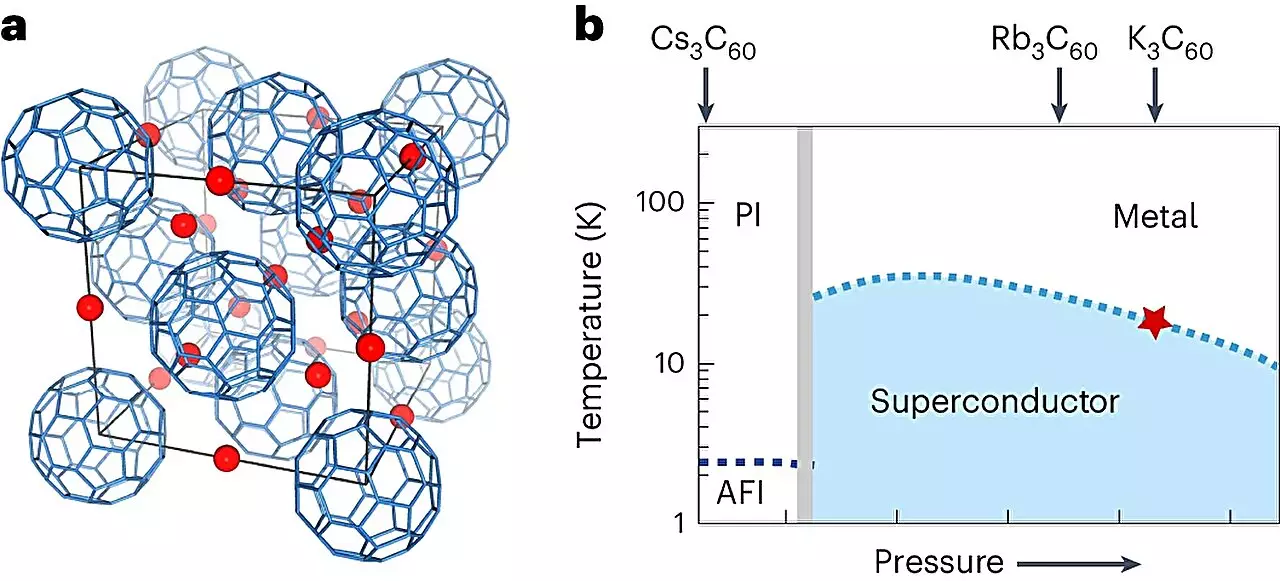Researchers at the Max Planck Institute for the Structure and Dynamics of Matter (MPSD) in Hamburg, Germany, have made significant progress in manipulating the properties of quantum materials using tailored laser drives. In particular, their recent experiment focused on creating a metastable, superconducting-like state in K₃C₆₀ using laser light. This breakthrough could have significant implications for technological applications in the future.
The Cavalleri group at MPSD discovered that by tuning the laser light to a specific low frequency resonance of 10 THz, they could induce the long-lived superconducting-like state in the fullerene-based material with far less powerful light pulses. Previously, achieving this state required high pulse intensities, making it impractical for real-world applications. However, by using a lower frequency and reducing the pulse intensity by a factor of 100, the researchers were able to recreate the desired state more efficiently.
The light-induced state observed in the experiment persisted at room temperature for 100 picoseconds. However, predictions suggest that it could have a lifetime of at least 0.5 nanoseconds. This opens up new possibilities for sustaining the metastable state for longer periods. Lead author Edward Rowe suggests that a light source with a higher repetition rate at the 10 THz frequency could potentially maintain the superconducting-like state continuously. This could be a crucial step towards practical applications of this phenomenon.
Advancing the Understanding of Photo-induced Superconductivity
The identification of the resonance frequency in the experiment has shed new light on the underlying microscopic mechanism behind photo-induced superconductivity. Rowe emphasizes that this finding will help theorists understand the important excitations involved in this effect. Currently, there is no widely accepted theoretical explanation for this phenomenon in K₃C₆₀. By developing a deeper understanding of the mechanism, researchers can further optimize the creation and utilization of the metastable, superconducting-like state.
Implications for Future Technologies
MPSD Director Andrea Cavalleri views these experiments as a demonstration of how advances in technology can make previously impractical phenomena applicable in various fields. The two-decade-long effort in exploring the effects of tailored laser drives on quantum materials is now converging towards future technologies. By leveraging the efficient creation of metastable states, researchers could unlock the full potential of quantum materials for applications such as high-speed computing, energy storage, and ultra-sensitive sensors.
The recent experiment conducted by the Max Planck Institute for the Structure and Dynamics of Matter offers an efficient way to create a metastable, superconducting-like state in quantum materials. By using low-frequency resonance and reducing pulse intensities, the researchers successfully induced and observed the long-lived state. This discovery opens up new opportunities for sustained superconducting-like states and advances our understanding of photo-induced superconductivity. The potential applications of these findings in future technologies are vast, and this research marks an important step towards realizing the practical utilization of quantum materials.


Leave a Reply